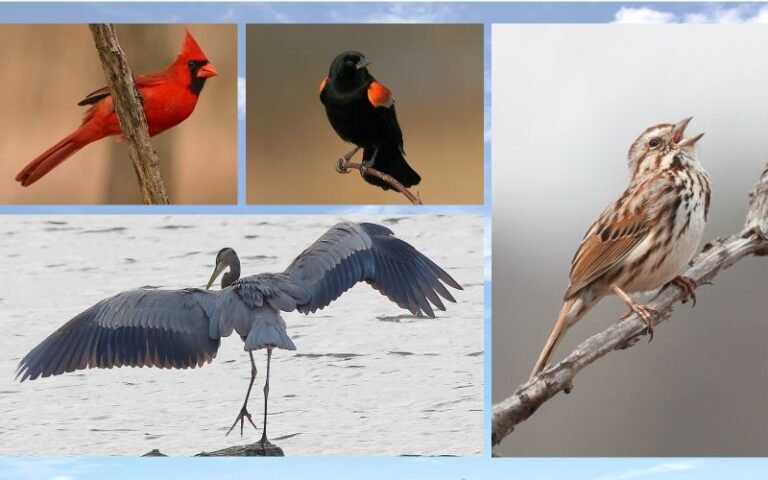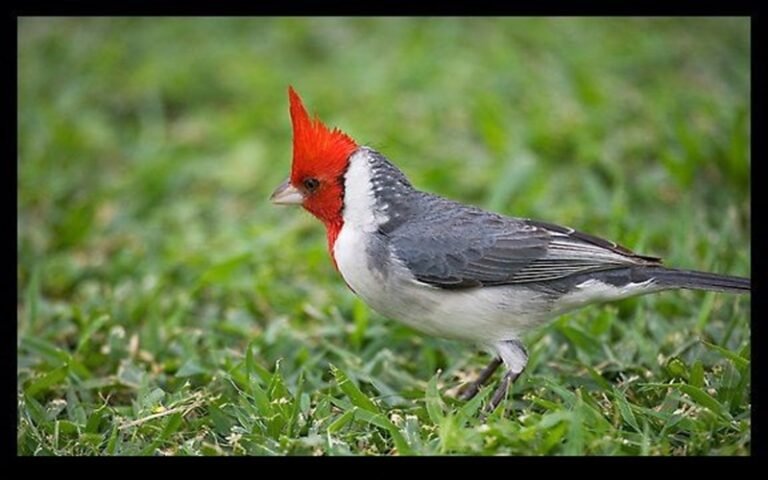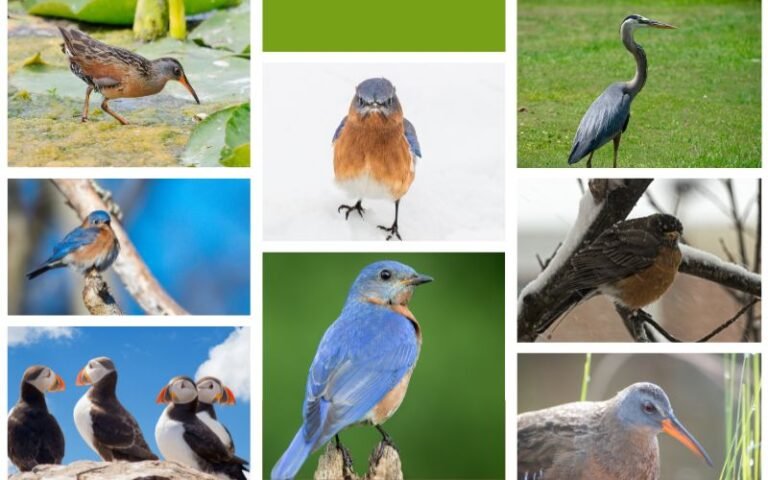Top 9 Mythical Birds
Mythical birds are creatures created by human imagination. These birds appear in human minds and their imaginations, which come from a fantasy entity.
These birds are associated with human folklore, Mythical beliefs, and religious context. In this article, we will delve into the top 9 Mythical Birds in legend and folklore worldwide by understanding the Mythical Bird concepts, some facts about Mythical Birds, and some queries about them.
So let’s explore those Mythical birds’ wonderland.
What is a Mythical Bird?
A Mythical Bird is an imaginary bird or creature made or shaped by human imagination. It is a fantasy creature that is a hybrid of humans and avian species.
These bird shapes and features vary the human mind’s imagination, which is influenced by people’s religious beliefs, Mythological concepts, folklore perspectives, and cultural perspectives.
These birds portray the significance of power and divine strength and the contrasts between humans’ good and evil sides in both the physical and spiritual worlds.
Top 9 Mythical Birds in Legend and Folklore
In this section, we’re going to explore the top 9 Mythical birds and analyze the symbolism they hold within folklore, cultural, religious, and historical contexts.

1. The Phoenix: Rising From the Ashes
The phoenix is a mythical bird with a golden appearance like fire. This Phoenix bird is associated with the sun and reborn culturalism in Greek mythology.
In many cultures, such as Egypt and Persian, these Phoenix birds symbolize reincarnation and the reborn theory. People and native beliefs say this bird lived for several centuries and has the divine power of rebirth from its own ashes.
According to Greek mythology, Phoenix birds symbolize immortality and restoration to life. Again, they symbolize the sun’s life, just like the sun sets and rises, which is the sun’s daily routine. Phoenix birds present eternity and renewal among people and folklore beliefs.
Similarly, the Christian people believe that this Phoenix bird portrays the cycle of rebirth which is associated with Jesus Christ’s life. The Phoenix’s origin is connected with ancient Egypt, as Herodotus shows.
After that, in the 19th century, many scholars thought that classical folklore might have influenced Egyptians. The phoenix also symbolizes a colorful and vibrant shine, which makes its appearance more significant.
Over the decade, this phoenix bird spread and gained various new associations with Herodotus, Lucan, the Pope, and Ovid.
The phoenix creature has also been used in literature, arts, and religious contexts to portray various symbolism and different interpretations of human lives.
Thus, this Phoenix bird symbolizes eternity, symbolizing hope for human spirits to embrace a new beginning with a new life.

2. Garuda- the Divine Steed of Vishnu
Garuda is another mythical bird in Hindu culture. It is the divine steed of Vishnu, which symbolizes virtue, knowledge, power, bravery, loyalty, and discipline in folklore beliefs.
This bird has a majestic human body with an eagle head and broad wings. Garuda was a Vahana of God Vishnu which was actually a vehicle of God or Goddess. This Garuda is also known as the king of the other birds, like kite figures.
It also represents the power that swiftly moves and travels anywhere. As a carrier of God Vishnu, Garuda plays a significant role here. He carries his owner or God behind for wars and missions, representing his loyalty and selflessness towards his masters.
It has a greater enemy: snakes or serpents. Even in Hindu religious myth, this bird, Garuda, was represented as the symbol of violent force, speed, and martial prowess in the war of Mahabharata.
Garuda’s image is strongly associated with Hindu culturalism and religion. He symbolizes protection and power, loyalty, courage, and selflessness toward his masters.

3. The Gigantic Roc of Arabian Nights
The Gigantic roc, spelled Rukh, is one of the legendary and powerful birds portrayed in many cultures, especially Arabian culture and tales like The Thousands and One Nights.
Some scholars claim that Roc was inspired by imaginary characters, which are also influenced by the Madagascar movie Elephant.
The Roc bird is extremely strong and can carry an elephant with its claws. It is also known as a bird of prey, with the power to hunt or kill any large animal.
Again it represents the power of strength and superiority among others. This bird is also embedded in many literary works, movies, or artworks to make interpretations via culture, folklore, and religious perspectives.
Because of its prey nature, it has been associated with strength and power among people. Some other critics say this bird might represent the enemy of people.
Because it can hunt and carry any large animal, humans’ dominant behavior toward other humans signifies that humans become the enemies of other humans themselves.

4. Thunderbird: Native American Majesty
Thunderbirds are related to North American native culture and folklore beliefs. Native people say they can create thunder by flapping their wings and lightning by flashing their eyes.
People of the Northwestern Coast culture, the United States, and the American Southwest have similar beliefs and thoughts regarding this Thunderbird.
Its power to create thunder and lightning represents reverence and fear. Some other native beliefs also portray the spirit of the sacred guardian and the protector of humans or people. Some believe they are the messengers between the spiritual and physical worlds.
It carries a message from earth to heaven. Some scholars believe that the man who has a dream or vision about Thunderbird will be a war chief of the people or guide the people through their journey.
This also has different interpretations and might represent human life achievement and life goals. Menominee of northern Wisconsin believe this Thunderbird controls the sky and rains with its delightful power.
Although different cultures’ beliefs vary from their ancestors and historical context, these Thunderbirds represent humans’ guardian souls and protectors in the physical world.

5. Simurgh – The Persian Mythical Bird
Simurgh is a Persian Mythical bird deeply rooted in Persian mythology, folklore, and culture.
According to its physical description, people describe them as large, wise birds with magnificent wings like peacocks with the heads of dogs and sharp claws like a lion. However, the books and the historical context mentioned it as a dog-bird.
Additionally, it’s a fusion or mixture of different creatures and holds different significance among folklore. According to Persian mythology, people consider them to be the garden of the world. It also holds the symbolism of wisdom that lived for thousands of years and has seen the rise and fall of civilization.
It was also associated with the concept of justice, which represents wisdom, justice, and equality among people. Moreover, another mythological concept considered it a gigantic bird that could carry any elephant or whale within its claws.
In Persian modern and classical literature, this bird represents the metaphor of God in Sufi mysticism. Thus, this Simurgh bird represents the artistic heritage of Persian culture and has a divine connection.

6. Fenghuang: Chinese Phoenix
The Fenghuang bird, the Chinese Phoenix, is associated with Chinese Mythological beliefs and heritage. The male birds are called Fèng, and the females are called huáng; both are called Fenghuang birds.
However, the gender distinction is not often seen, as together, these birds symbolize a single feminine entity towards human beliefs. Chinese people often associate this bird with their Chinese dragon (traditionally a male bird).
However, In Japanese culture, it’s called Vietnamese, and in Korean culture, it’s called bonghwang. Western culture also refers to them as Phoenix or Chinese Phoenix.
According to the Erya’s (Chinese 1st surviving dictionary) chapter 17, it has mentioned the Fenghuang bird is made from the beak of a rooster, a face with a swallow, a neck similar to a snake, breasts similar to a Goose, and its back is similar to tortoise and tail is similar to fish.
But nowadays, people describe this bird as a combination of many birds, like the head of a golden pheasant, the body of a mandarin duck, the tails of peacocks, the legs of a crane, the mouth of a parrot, and the wings of a swallow.
In Chinese Phoenix, every body part is symbolized differently. For example, the head symbolizes the sky, the eyes symbolize the sun, the back symbolizes the moon, the wings symbolize the wind, the feet symbolize the earth, and the tails symbolize the planets.
Some Chinese folklore believe that this Phoenix creature symbolizes the balance and harmony of human life. Other folklore beliefs depicted the idea of the royal entity, integrity, charity, and humanity through it.
Few believe it’s a symbol of honesty, uprightness, politeness, grace, and virtue. Chinese culture considers this bird a blessing for married couples or husband-wife relations.
Similarly, it appears to be a symbol of fire, sun, justice, and obedience in Japan. Chinese Phoenix birds represent the harmony of life, balance, and true integrity.

7. Siren: Bewitching Bird-Women
In Greek mythology, Siren is a creature with a combination of half woman and half bird that was created by human imagination based on their mythology and folklore beliefs.
They are also depicted as half-mermaid beings with bird wings, famous for their captivating singing voices. People believe their origin is based on rocky Islands and shores of the Mediterranean Sea (present time in Italy).
Some people believed that two Sirens lived on the western sea islands. Eventually, the population increased by one more siren; now, three sirens are seen on Italy’s west coast near Naples.
Folklore people believed they were the daughters of the sea God, Phorcys, or the river God, Achelous. In the Odyssey, an epic poem written by Homer, he mentions sirens as dangerous creatures who possess one sailor because of their beauty and melodious singing voice.
The sailor couldn’t stabilize himself and could not steer the ship according to its pointed direction by listening to their magnificent voice, which hypnotized him. Ultimately the ship got hit on rock.
Even the protagonist, Odysseus, who is part of the epic, tries to tie him to the ship by plugging his ear with wax. Over time, the Siren character was depicted in too many artists’ forms in literature and literary art.
Some folklore cultures believe that the Siren symbolizes danger and temptation for human beings. Others believe that the Siren hypnotizes humans’ minds and possesses their minds and souls with evil entities.
In a few cultural beliefs, sirens represent seductive women who possess men to deceive them. Thus, from the perspectives of both mythological and folklore, sirens symbolize the temptation of human desire for beauty and attraction to mysterious facts and unwanted danger.

8. Jatayu- the Loyal Vulture King
According to Hindu mythology, the Jatayu character has a special significance in one of Ramayana’s most epic Hindu wars. Jatayu was a brother of Sampati, and he was the nephew of Lord Garuda.
According to the Hindu Ramayana, Jatayu was depicted as a demi-god in the disguised form of a vulture, also mentioned as the King of Vultures (Giddhraja).
Based on the historical context, when Jatayu was flying in the sky, he heard a female voice seeking help. When he rushed to chase the voice, he found that Ravan was taking or abducted Sita Ma in his chariot.
He warned to let Sita Ma go, but Ravan did not listen to him. At that moment Jatayu battled against Ravan and fully destroyed his chariot. In the meantime, Ravan took out his spread which was gifted by Lord Shiva Mahadev, he cut off Jatayu’s wing and proceeded to Lanka with the Sita Ma ( Goddess Sita Devi).
When Lord Ram and Lord Laxman came to the spot, they found injured Jatayu lying there. Then, they both blessed his soul so that the mortals remained Jatayu. Based on historical, religious, and mythology beliefs, people admired Jatayu as a symbol of devotion towards God.
Jatayu symbolizes sacrifice and righteousness. In some Hindu cultures, people symbolize Jatayu with power and strength. In short, the immense mythical bird Jatayu is a symbol of sacrifice, devotion, strength, and righteousness toward God.

9. Harpies: Winged Female Monster
In ancient Greek and Roman mythology, a Harpy or Harpies is a mythical creature of half human and half bird. Folklore people depicted this bird as a head with maidens, a human face, and long eagle claws with large wings.
Ultimately, it’s depicted as a winged monster bird, a combination of the human body and eagle legs and wings, which is identified as creating strong winds. They are also emphasized as water monsters and personified by the gust of wind.
According to Greek mythology, harpies are connected with God, Zesus, and also associated with the wind spirit. They came from a God on earth to perform various duties and responsibilities as messengers of God.
Folklore people claim they have seen harpies controlling the wind and manifesting the storm with their power. Based on The Argonautica epic poem, the Harpie monster was sent by a God to punish one king named Phineus, whom the God of prophecy gifted.
But he misuses his power, therefore, Harpies come to his kingdom and torture him by stealing his food, and he can’t eat his food. Later, Argonauts managed to capture Harpies and take an oath from her not to return to that place ever and release her.
Later, representation and symbolism became important factors in literature, Renaissance arts, and works of art. In Greek mythology, harpies symbolized torment, punishment, and death.
In earlier years, they are also symbolized by wind and storm. In some folklore, harpies are considered bad luck for humans because they become the reason for the destruction of human wealth, property, and prosperity.
Ultimately, in ancient Greek and Russian myths, harpies symbolize punishment, death, torment, and bad luck in human life.
Finishing Line
Mythical creatures hold significant symbolism in humans’ cultural context, historical events, and religious beliefs, which shape and change their perceptions, their way of seeing life, and their perceptions of life.
All these 9 mythical creatures hold a significant symbolism on human life from over the decades that modifies their perception and personal belief towards life.
FAQ
In this section, this article will give some short, brief answers regarding the Mythical birds concept and their folklore beliefs.
- What is the symbolic significance of mythical birds?
Mythical birds symbolize eternity, rebirth, immortality, and a new beginning of life. Some other folklore concepts are that these mythical birds symbolize honesty, integrity, divine worship, selflessness, sacrifice, power in human life, and their cultural roots.
- Are mythical birds only found in ancient mythology?
NO, Mythical birds are not only found in ancient mythology. These birds have appeared throughout Chinese, Japanese, Russian, and Hindu myths. Similarly, these birds have appeared in humans’ imaginations in various mythologies.
- How do mythical birds impact modern society?
These mythical birds are creating an impact on modern society through literary artworks, movies, and pop culture by using them as metaphoric references to interpret their symbolic significance in many situations.
- Do different cultures have similar mythical bird stories?
YES, many cultures have similar mythical birds. For example, phoenix mythical birds are also mentioned in Greek, Egyptian, Chinese, and Japanese cultures, including Korean culture.
- Who is the Greek God of Birds?
Jesus is the Greek God of Birds, which is connected with eagles, who are also emphasized as the ruler of the skies.
- What Bird is Similar to a Phoenix?
Fenghuang, the Chinese Phoenix, and Simurgh, the person mythical bird are similar to the Phoenix,
- What is a Mythical Creature Called?
A Mythical Creature is an imaginary creature of the human mind that is related to and based on its historical context, folklore perception, and religious beliefs.







